Shams al-'Amareh Mansion in Tehran | Golestan Palace Guide
The Golestan Palace complex provides a fascinating glimpse into the evolution of Iranian architecture, spanning from the Zand dynasty to contemporary times.
Over the years, especially during the Qajar period, various buildings were added to enrich this palace, culminating in a unique complex that continues to attract visitors today. Among its distinguished structures, Shams al-'Amareh Mansion holds a special allure with its exceptional beauty and historical significance. Located in Tehran, this landmark is celebrated as one of the city's most prominent and culturally rich attractions, which we explore in detail below.
Interested in visiting Shams al-'Amareh Mansion?
Check out our Tehran tour packages to find an itinerary that includes visiting the mansion
or...
Design your own tailor-made itinerary and include Shams al-'Amareh in it by yourself, today!
The Meaning of Shams al-Amara
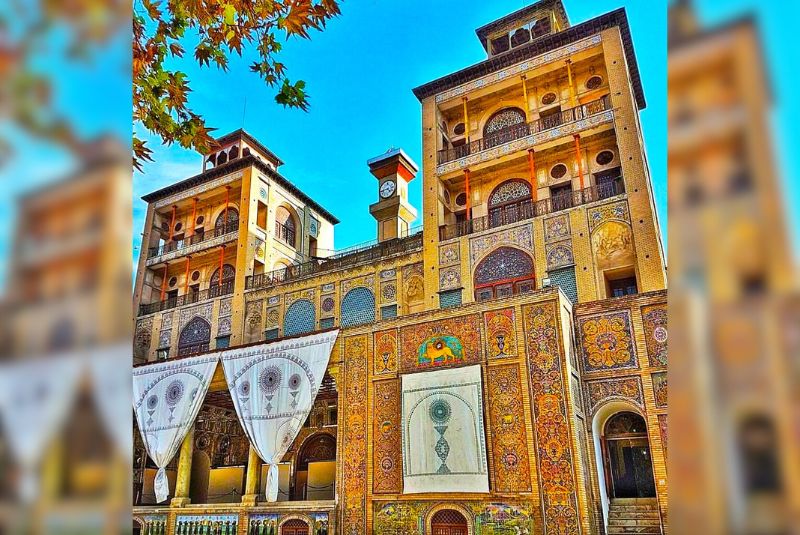
According to Dehkhoda's dictionary, the literal meaning of Shams al-Amara is "the sun of buildings." Historians have also referred to it as "Khorshid Palace," which translates to "the sun of royal palaces," highlighting its status as one of the most beautiful palaces in Iran. This lofty palace, adorned with a variety of decorations such as paintings, mirror work, and stunning tiles, shines brilliantly like the sun.
Additionally, the palace was constructed on the eastern side of Golestan Palace, precisely where the sun rises. As the most prominent building in the east, it was fittingly named Shams al-Amara, meaning "the sun of buildings," reflecting both its physical location and its radiant beauty.
| Related: Tehran's Most Famous Palaces
History and Construction of Shams al-'Amareh Mansion
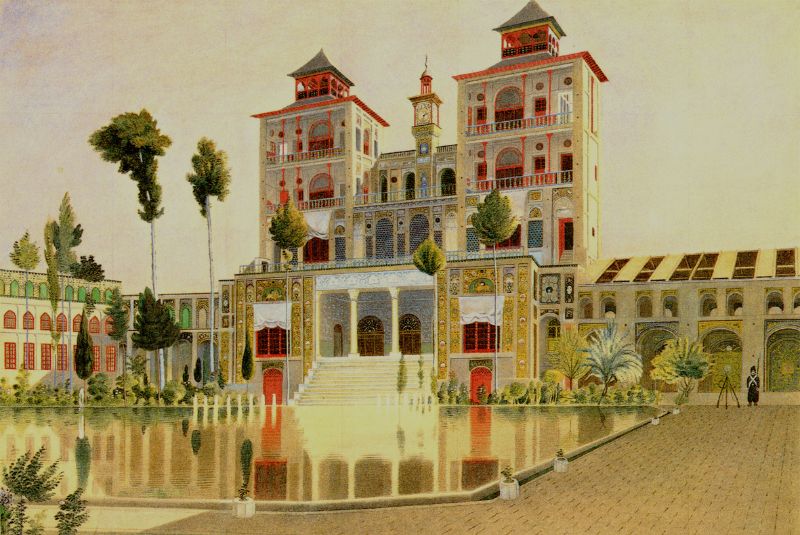
Naser al-Din Shah Qajar had a profound fascination with European tall buildings, their decorations, and their luxuries. This interest, combined with the beautiful and authentic Iranian architectural style, led to the construction of Tehran's first skyscraper, approximately 35 meters high. Inspired by images of European buildings and before his travels to Europe, Shah Qajar desired to build a similar structure in his capital. Additionally, the noble Ali Qapu mansion in Isfahan influenced his decision.
Shah Qajar tasked Dost Ali Khan Nizam al-Dowleh, his treasurer and head of the mint, who also oversaw the architectural affairs of the court, with the construction. Moayer al-Mamalek designed the mansion's layout, and Ustad Ali Mohammad Kashi led the architecture, using his own funds.
Known also as the "Sun Building" or the "Shahneshah Palace," construction began in 1865 and concluded two years later in 1867. Naser al-Din Shah inaugurated his favorite tall tower in 1868. At the time, it was the tallest building in Tehran and served as the city's symbol before the National Garden's head was constructed.
Shams al-'Amareh featured many luxurious elements, including multiple floors, tall balconies, clean wind deflectors, and a clock tower. These characteristics mirrored Western palaces, making it the first modern building in Iran with integrated architecture that showcased the splendor of Iranian art. This mansion holds significant historical, artistic, and tourism value.
The Etimad al-Sultaneh newspaper described Shams al-Amara's alley and street as some of the best in Tehran. The alley, approximately 1500 cubits long and 20 to 30 cubits wide, had fruit trees and plantains lining it, with a carriage and pedestrian paths. Cast iron lights illuminated the alley at night, making it a popular public spot. The alley led to the Dar al-Funun school entrance, with a pharmacy on the lower level and a laboratory and public photography studio on the upper level. This area attracted many visitors for its medicines, spices, and photography.
Shams al-'Amareh mansion was restored in 1971 and 1981, with further renovations completed in 1997. In 1999, the mansion opened to the public, with ongoing renovations to its upper floors for tourist visits.
The mansion, built on five floors and standing 25 meters high (30 meters including the Kolah Ferangi mansion), is next to the city citadel wall. Shams al-'Amareh, the first modern Qajar mansion, used metal columns, making it Iran's first metal structure. It introduced many of Tehran's firsts, including the city's first symbol, the first tall tower, the first public clock, and the first integrated architecture. Over 150 years later, this historic skyscraper still narrates a vital part of Tehran's artistic and historical identity.
| Read more: Isfahan Historical Palaces
Architecture of Shams al-'Amareh Mansion
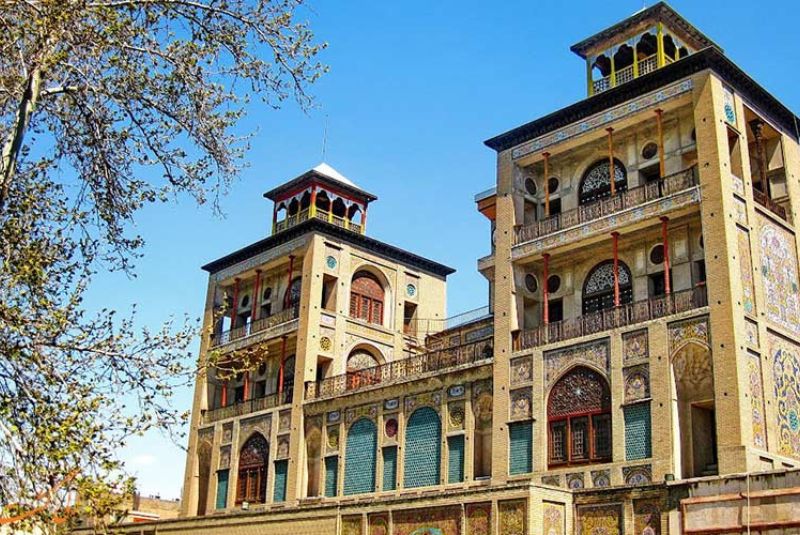
Shams al-'Amareh, Tehran's first tall tower and a key structure in the Golestan Palace, is a significant example of early modern Iranian architecture from the Qajar era. Located in the eastern part of the Golestan complex, Shams al-'Amareh mansion is notable for its captivating and unique exterior and interior decorations.
The building's design includes two prominent towers flanking the sides. Traditional materials such as brick, straw, and saroj were used in its construction, along with gables to create divisions between the floors. The use of trusses provided the necessary support to build higher levels, and flat surfaces were mounted on top of these trusses to form each subsequent floor. The mansion, which has five floors, features stairs that are 40 to 45 cm high, making them challenging to navigate.
Inside, Shams ol-'Amareh mansion showcases stunning examples of Iranian architectural decoration, including intricate stucco work, mirror work, tile work, and paintings. These decorations have earned the mansion international acclaim. The first floor houses the Shahneshin hall and a porch, both adorned with elaborate mirror work. Flanking the Shahneshin are the earring rooms, used for receiving guests. The floor is covered with Qajar-style seven-color tiles, depicting European landscapes and Western architecture within an Iranian framework. The large porch facing the courtyard was used by Shah Qajar for various ceremonies and rituals.
The upper floors contain living rooms and corridors, temporarily used for leisure or evening meals. Each floor includes two adjacent rooms: one served as a passageway with access stairs, and the other opened to the porch and roof through doors and windows. The top floor, known as the Kolah Ferangi mansion, features strong wooden guards and is adorned with luxurious decorations such as stucco, mirror work, relief paintings, and seven-color tiles. It is believed that the king and the harem women would sit atop Kolah Ferangi to enjoy the view of Tehran.
A historical account describes Shams ol-'Amareh as an exceptionally tall and impressive building, featuring mirror-lined halls, large marble columns, and numerous levels. Standing at 35 meters high, it includes two towers with a central room offering panoramic views of Tehran and its surroundings. A large bell at the top of the building could be heard across the city.
Shams al-'Amareh, with its blend of traditional Iranian materials and modern structural techniques, remains an architectural masterpiece that continues to draw admiration and represents a significant part of Tehran's historical and artistic heritage.
| Discover: Best Museums in Tehran
Different Sections of Shams al-'Amareh Mansion
Shah-Neshin (First Floor)
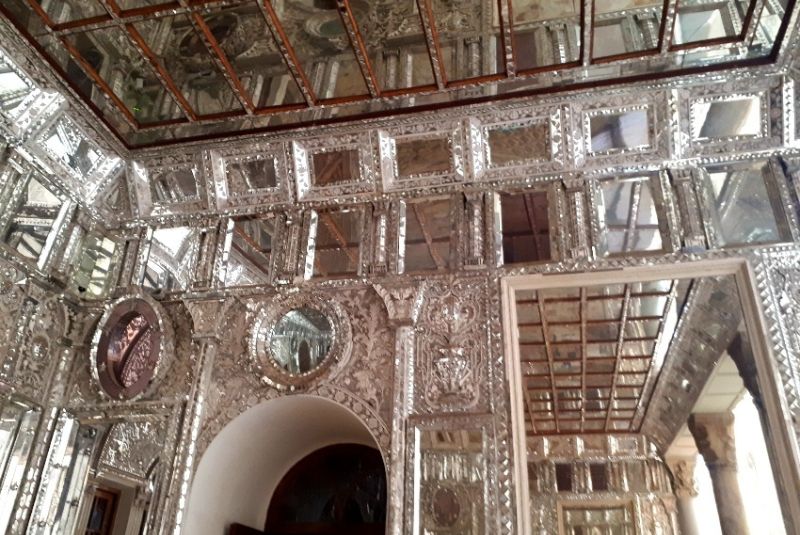
Upon visiting Shams al-'Amareh Mansion, the first floor captures immediate attention with its splendid mirror work adorning the porch and the royal throne. Adjacent to these, the earring rooms on either side of the palace boast significant decorative elements. Historically, this floor was primarily utilized for ceremonies, with the upper floors serving more temporary and recreational purposes. Originally, access to the main hall was through the earring room, which traditionally acted as a vestibule in Iranian homes. Over time, the main entrance shifted from the front stairs to the porch area, reflecting the evolution of architectural usage.
Living Rooms
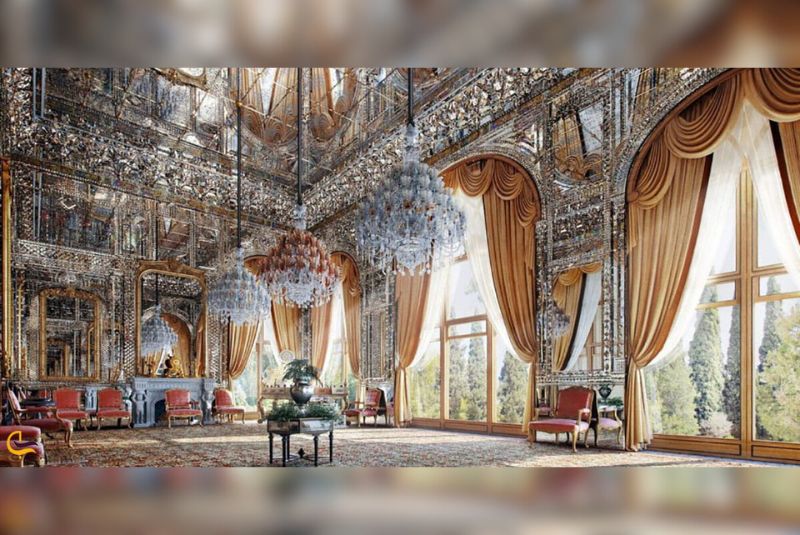
The upper floors of Shams ol-'Amareh Mansion feature temporary living quarters, corridors for communication, and spaces for evening gatherings. Access between floors is facilitated through staircases with steps measuring 40 to 45 cm in height. To optimize space, these stairs are strategically positioned within the wider sections of the building. Employing a minaret-like construction technique, the diameter of the staircases decreases as they ascend, reducing weight and ensuring structural stability, especially during seismic activity.
Kolah Farangi
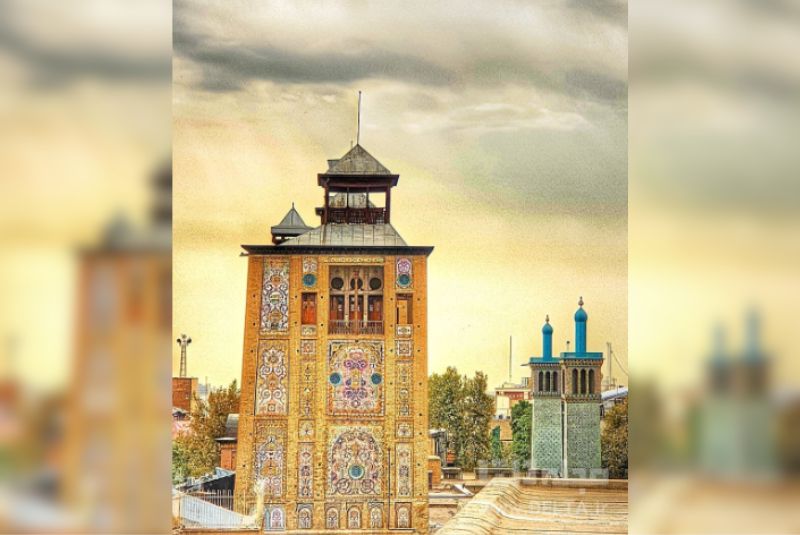
Moving further up the mansion, except for the topmost floor, two adjacent rooms are present. One room serves as a transit area with stair access to other rooms, while the second room connects directly to the porch and rooftop via doors and windows. Access between the tower's sides necessitates traversing the rooftop, underscoring its functional importance. The topmost floor, known as Kolah Farangi, is enclosed with sturdy wooden railings and features small rooms adorned with lattice decorations, paintings, and mirror work. Observing the exterior, one notices holes, remnants from historical wooden scaffolding used during construction. These holes serve as a testament to the building's past and are prevalent throughout the walls of the Golestan Palace complex. Adjacent to the mansion, in the northeastern part of the complex, a long tiled wall showcases intricate designs that often captivate tourists, offering ample opportunities for photography, a recurring theme of architectural beauty within Golestan Palace.
| Suggestion: Saad Abad Historical Complex
Shams al-'Amareh Clock Tower
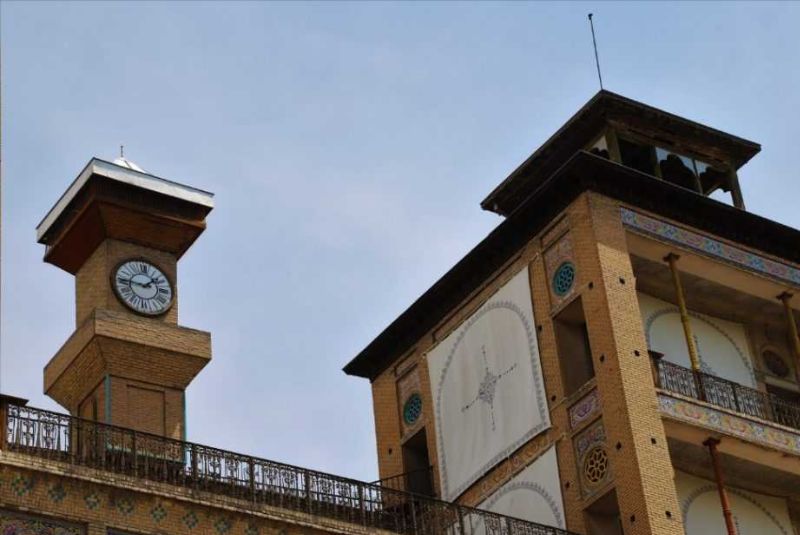
The Shams al-'Amareh clock tower is the most renowned feature of the mansion and one of the most famous clocks in Iran. It holds the distinction of being Tehran's first public clock, marking another first for the Shams ol-'Amareh Mansion within the Golestan Palace complex. Approximately 150 years ago, this clock was the primary timekeeper for the residents of Tehran, informing them of the time.
Historical records indicate that Naser al-Din Shah Qajar had a strong affinity for clocks, often bringing them back as souvenirs from his trips to Europe. Today, Golestan Palace houses around 30 clocks, many of which were gifts from Western countries. Among these, the two-sided clock atop Shams al-'Amareh mansion was a gift from Queen Victoria to Naser al-Din Shah during his first European trip in 1873. This clock, with its striking bell, was a central feature of the mansion.
The clock was the first public timepiece in Tehran, and its sound could be heard throughout the city. However, the loud chimes disturbed the peace of both the palace residents and the city's inhabitants. As a result, Naser al-Din Shah ordered the volume to be reduced, and eventually, the bell was silenced by adjusting the mechanism. Despite this, the clock continued to function and display the time. By the end of the Qajar era and the beginning of the Pahlavi period, the clock had nearly ceased to operate, stopping at 6:10 on a day in 1925.
For about 90 years, the clock remained inactive until it was repaired in 2009, 2011, and 2017, albeit temporarily. In the first month of spring in 2021, the capital's oldest public clock was revived once more, its bell sounding again in Tehran. The restoration took two months, thanks to the efforts of the local municipality and the expertise of a master clockmaker named Mohammad Saatchi, who brought the clock back to life.
| Suggestion: Niavaran Palace Complex
Legends of the Clock Tower
Numerous interesting stories surround this double-sided clock, contributing to the legends of Shams al-'Amareh mansion:
- The Crows and the Flag: One tale tells of a time during the decline of Mohammad Ali Shah's rule. Crows attacked and tore the flag that always flew above the clock tower to pieces. Two days later, Mohammad Ali Shah was overthrown, leading to a change in the monarchy.
- The Owls and the Reign: Another story involves two owls, one male and one female, that nested in the clock chamber. It was believed that their appearance heralded a change in reign. When Naser al-Din Shah was assassinated, the owls emerged from their nest, and on the third day, the king was killed, passing the throne to Muzaffar al-Din Shah. On September 19, 1941, the owls appeared again, coinciding with the Angelo-Soviet invasion of Iran, leading to widespread famine, killings, and insecurity.
Shams al-'Amareh Location and Access
Shams al-'Amareh Mansion is situated in the eastern section of the Golestan Palace complex in Tehran, Iran. There are several options for reaching this historic site.
One convenient way is to take the Tehran subway. Use line 1, alight at the 15 Khordad station, and head east until you reach Davar Street. Turn left onto Davar Street, and you will see Golestan Palace ahead.
Additionally, buses from Imam Khomeini Square and the Ghorkhane terminal also have routes leading to this area.
Visiting Hours
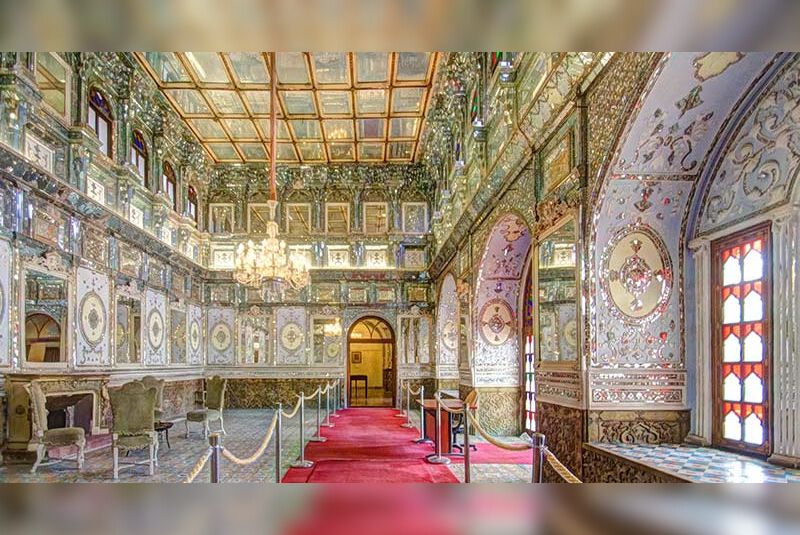
Visitors can access Golestan Palace and Shams al-'Amareh Mansion every day. The visiting hours are from 9 am to 5:30 pm during the first half of the year (spring and summer) and from 9 am to 4:30 pm during the second half of the year (autumn and winter).
Final Takeaway
We hope you've enjoyed exploring the rich history of Shams al-'Amareh Mansion. If this has sparked your interest, we encourage you to visit Tehran and discover more of its magnificent attractions. Whether you're planning your trip or seeking more information, our experienced guides are here to assist you. Reach out to us for tour bookings and further details. Your adventure awaits in Iran!
Share your story!
Comment below and let us know about your Experience.
Your story inspires others!


Comment
Leave a Comment